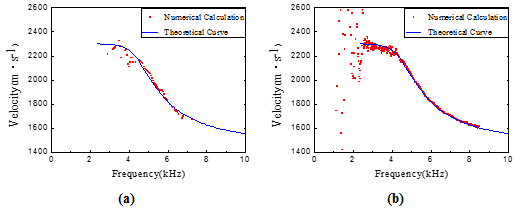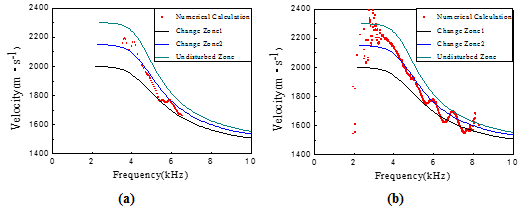A wideband dipole signal is required for the dipole dispersion correction and the near-borehole imaging.
The excitation energy of the dipole flexural wave is mainly in the Airy phase, while those corresponds to the high and low frequencies are relatively low. Thus, it is difficult to obtain stable and reliable phase velocities, which affects the dispersion correction and the quality of the near-borehole imaging.
To obtain the broadband flexural wave dispersion, Dr.CAO Xueshen and his colleagues from the Institute of Acoustics (IOA) of the Chinese Academy of Sciences proposed a new wideband dipole-logging method based on the segment linear frequency modulation (SLFM) excitation.
The paper entitled “Wideband dipole logging based on segment linear frequency modulation excitation” has been published in the Applied Geophysics.
They first proposed a SLFM signal to approximate the nonlinear frequency modulation signal as a dipole excitation signal. The new excitation signal compensates the flexural wave excitation intensity by enhancing the energy of the high- and low-frequency bands while decreasing the energy of the Airy phase frequency point.
The received waveform approximated a flat wideband response and increased the SNR of the signal over the entire frequency band. Consequently, the dipole detection range was expanded and the S-wave velocity calculation accuracy improved.
Researchers then obtained the numerical calculation results of dispersion curve (see Figures below), when the sound sources are a Ricker wavelet and a SLFM signal, respectively, in homogeneous hard formation and in a variable borehole formation. Compared to the Ricker wavelet, the SLFM signal extends the effective range of the band to acquire all the dispersion information.

Figure 1. Dispersion curves in a homogeneous hard formation with different sound sources: (a) the Ricker wavelet (b)the SLFM signal (Image by CAO Xueshen)

Figure 2. Dispersion curves in a variable borehole formation with different sound sources: (a) the Ricker wavelet (b)the SLFM signal (Image by CAO Xueshen)
The results revealed that the SLFM signal changes the single fixed excitation mode of the dipole acoustic logging and adjusts itself according to the characteristics of the formation to accommodate the variable formation environment. The study contributed to obtaining the complete formation dispersion information, which is important to the wideband dipole acoustic logging.
Reference:
CAO Xueshen, CHEN Hao, LI Ping, HE Hongbin, ZHOU Yinqiu, WANG Xiuming. Wideband Dipole Logging Based on Segment Linear Frequency Modulation Excitation. Applied Geophysics, 2018, 15(2): 197-207. DOI: 10.1007/s11770-018-0674-9.
Contact:
WANG Rongquan
Institute of Acoustics, Chinese Academy of Sciences, 100190, Beijing, China
Email: media@mail.ioa.ac.cn


